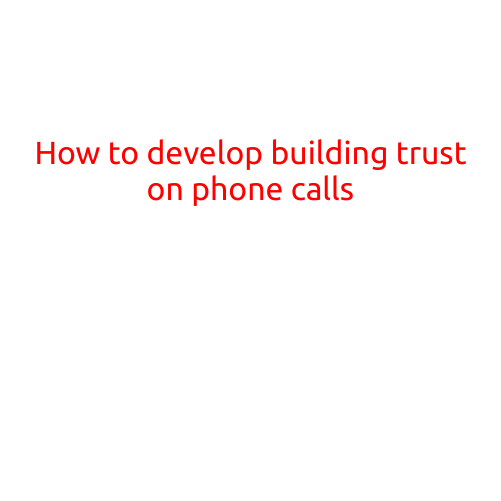
How to Adapt to Being Proactive on Calls
As a sales professional, making outbound calls is an essential part of your job. However, many salespeople struggle to make the most out of their calls, spending too much time waiting for the other person to respond or making a pitch without truly engaging with the prospect. Being proactive on calls is crucial to building rapport, identifying pain points, and ultimately closing deals. In this article, we’ll explore the strategies and techniques you can use to adapt to being proactive on calls.
The Benefits of Being Proactive on Calls
Before we dive into the tips, let’s take a look at the benefits of being proactive on calls. When you’re proactive, you:
- Show enthusiasm and energy, which can help build rapport with the prospect
- Increase your chances of getting the conversation started and keeping it going
- Identify pain points and concerns earlier, allowing you to tailor your pitch and close the deal more effectively
- Build trust by showing that you’re interested in the prospect’s needs and willing to listen
1. Prepare Before the Call
Being proactive starts with preparation. Before making the call, take the time to:
- Research the company and the prospect to understand their needs and challenges
- Review your pitch and be ready to adapt it to the conversation
- Prepare a list of open-ended questions to ask the prospect
- Think about potential objections and how you’ll address them
2. Take the Lead
Once the call is underway, it’s essential to take the lead. Instead of waiting for the prospect to respond, ask them questions and drive the conversation forward. Use phrases like “Can you tell me more about…” or “I’d love to hear about…” to keep the conversation moving.
3. Use Active Listening
While being proactive doesn’t mean dominating the conversation, it does mean being an active listener. Pay attention to what the prospect is saying and show that you’re engaged by nodding, making eye contact, and summarizing what they’ve said. This will help build trust and keep the conversation flowing.
4. Identify Pain Points
Pain points are the challenges or problems that the prospect is facing, and identifying them early on is crucial to selling successfully. Ask open-ended questions like “What’s been the biggest challenge for your company lately?” or “How do you see your business evolving over the next six months?” to uncover potential pain points.
5. Ask Probing Questions
Once you’ve identified a pain point, ask probing questions to gather more information. This will help you to tailor your pitch and show the prospect how your solution can address their specific needs. Examples of probing questions include “Can you elaborate on that?” or “How does that impact your business?”
6. Be Ready to Ask for the Sale
Finally, being proactive on calls means being ready to ask for the sale. Don’t wait for the prospect to bring up the topic of pricing or next steps; take the initiative and discuss the next steps with them. Use phrases like “Based on what we’ve discussed, I think our solution could be a great fit for your company” or “I’d love to put together a proposal for you. Can I follow up in a few days to discuss the details?”
Conclusion
Being proactive on calls is a skill that takes practice, but with the right strategies and techniques, you can adapt and start seeing results. By preparing before the call, taking the lead, using active listening, identifying pain points, asking probing questions, and being ready to ask for the sale, you’ll be well on your way to making the most out of your calls and driving more sales for your company. Remember, being proactive is key to building rapport, identifying pain points, and closing deals. With the right approach, you can make the most out of every call and drive success for your sales team.





